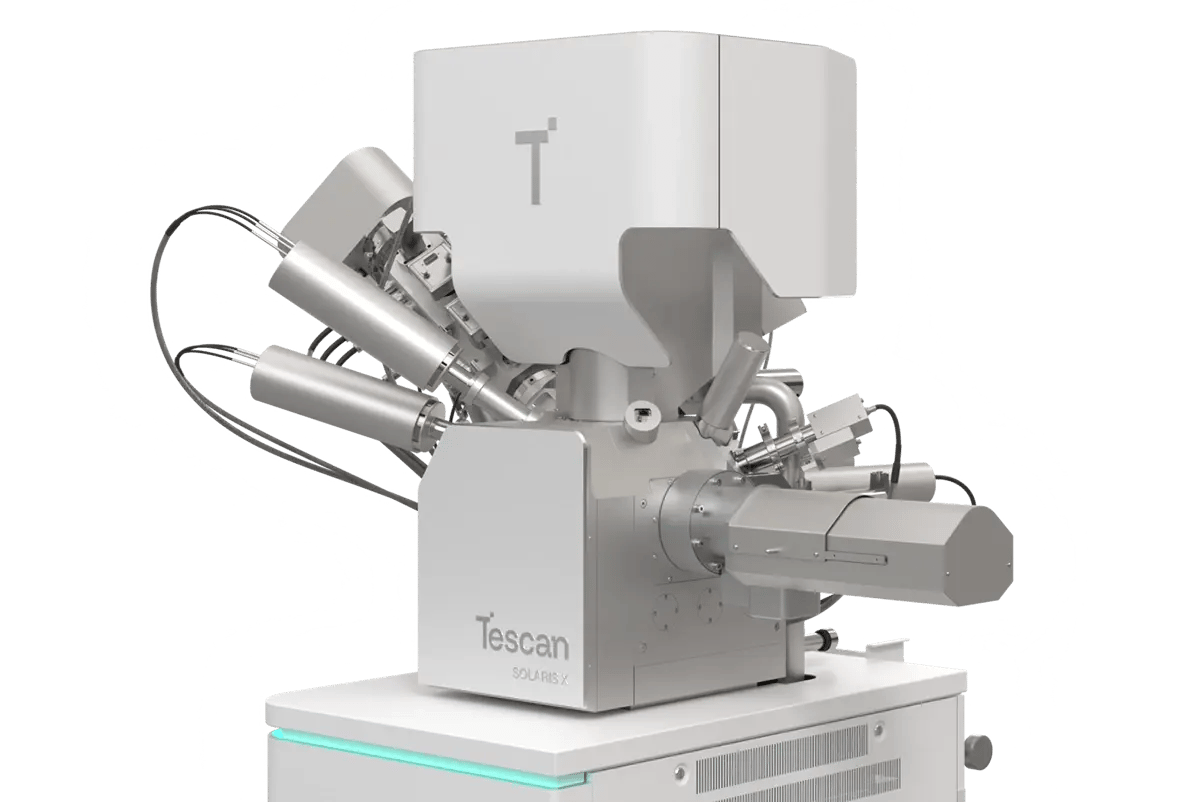1. Root of the Problem
Why Ga-Based FIB Prep Compromises DRAM Failure Analysis
Sub-100 nm DRAM devices contain delicate gate and capacitor structures that demand precise, low-damage TEM preparation. However, Ga FIB workflows often introduce amorphous damage, ion implantation, and redeposition — particularly in sensitive regions like Ti contacts and oxide interfaces.
These effects degrade image contrast, interfere with EDS signals, and reduce confidence in failure analysis results.
Tescan SOLARIS X with iFIB+™ Xe plasma FIB avoids these limitations by combining inert ion milling with fine beam control and in-situ monitoring.
- Ga-free prep preserves native material chemistry
- Final thinning below 5 keV reduces amorphous surface layers
- Real-time SEM imaging supports immediate lamella QC
- Compatible with BF-STEM, HAADF, and EDS mapping
Avoid rework, reduce artifacts, and confidently localize failures in lamellae prepared from today’s most advanced DRAM technologies.
2. Materials and Methods
How TEM Sample Preparation Was Performed Using Tescan SOLARIS X with Xe Plasma FIB-SEM
A 66 nm SDRAM sample was selected to demonstrate the effectiveness of non-Ga FIB TEM lamella preparation using the Tescan SOLARIS X. The region of interest was first identified with high-resolution SEM imaging to localize gate-level structures and capacitor arrays.
Bulk trenching and lamella lift-out were performed using high-current Xe plasma milling, followed by stepwise thinning to achieve electron transparency. Final thinning was carried out below 5 keV to minimize amorphous damage and preserve critical interface quality.
Lamella quality was verified in-situ using SEM contrast and geometric inspection. The completed sample was mounted ex-situ and imaged using BF-STEM and HAADF detectors. EDS mapping was used to confirm oxide and Ti layer integrity across the thinned region.
The Xe FIB-SEM workflow ensured fast, repeatable, and contamination-free preparation of high-quality TEM specimens from targeted DRAM structures.
3. Results and Discussion
Produce High-Quality Lamella for STEM and EDS Analysis of DRAM Interfaces
Using Tescan SOLARIS X with Xe plasma FIB, a lamella approximately 80 nm thick was prepared from the active region of a 66 nm SDRAM device. In-situ SEM imaging confirmed uniform thinning and edge integrity prior to lift-out.
Post-preparation imaging in BF-STEM and HAADF modes revealed clear resolution of gate structures, dielectric layers, and capacitor contacts. Interface contrast remained high across oxide and Ti regions, with minimal surface damage or curtaining.
EDS mapping confirmed the presence and spatial continuity of key materials, including Ti electrodes and adjacent oxide layers. Spectral data showed no evidence of Ga contamination, supporting the inert milling characteristics of the Xe source.
Together, the results demonstrate that the SOLARIS X workflow delivers electron-transparent lamellae suitable for advanced DRAM failure analysis — with reliable structure preservation, strong elemental contrast, and efficient prep time.








